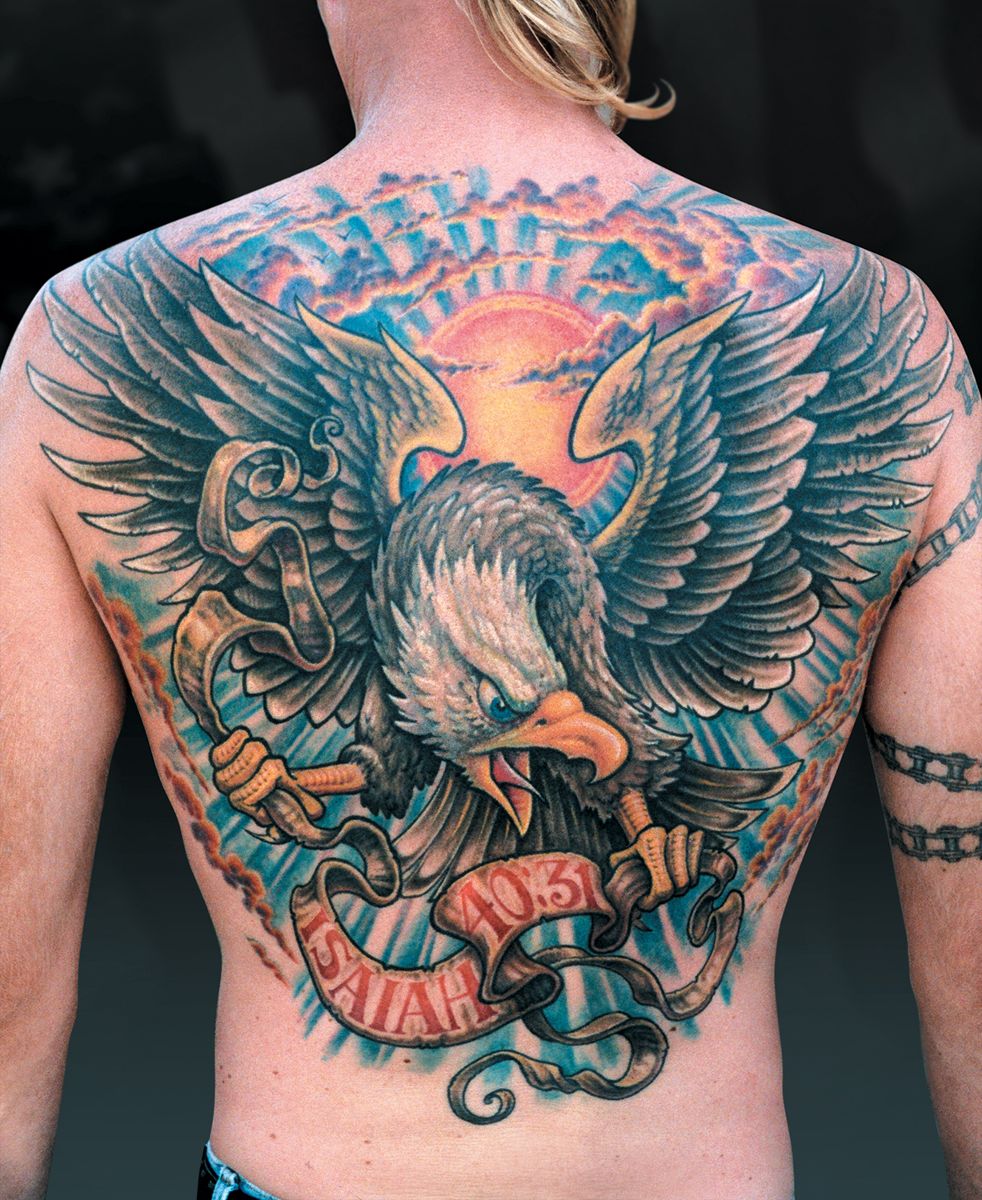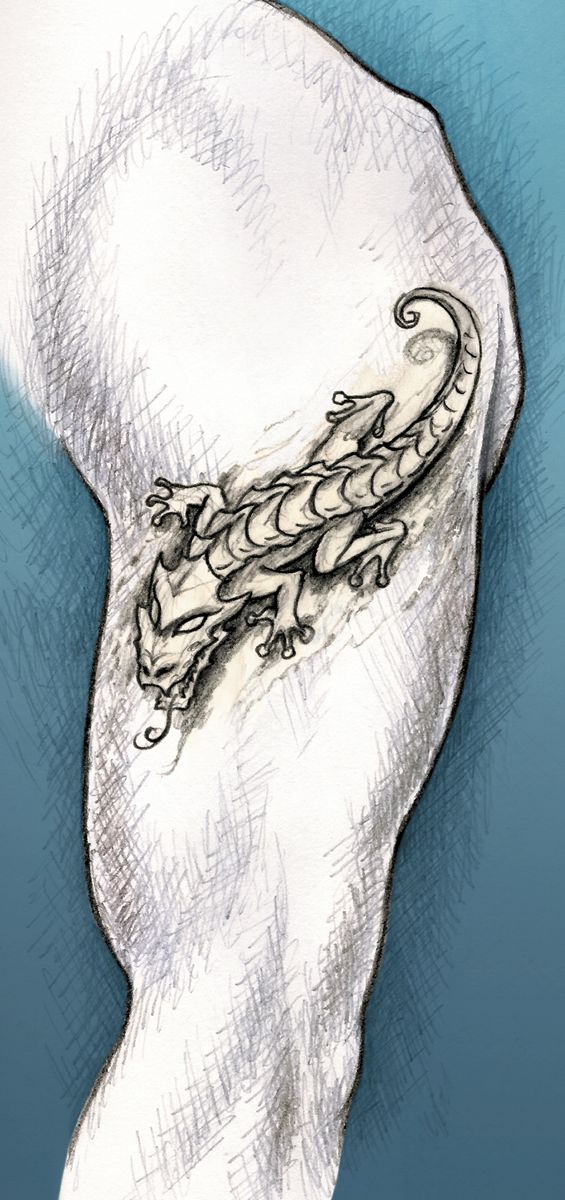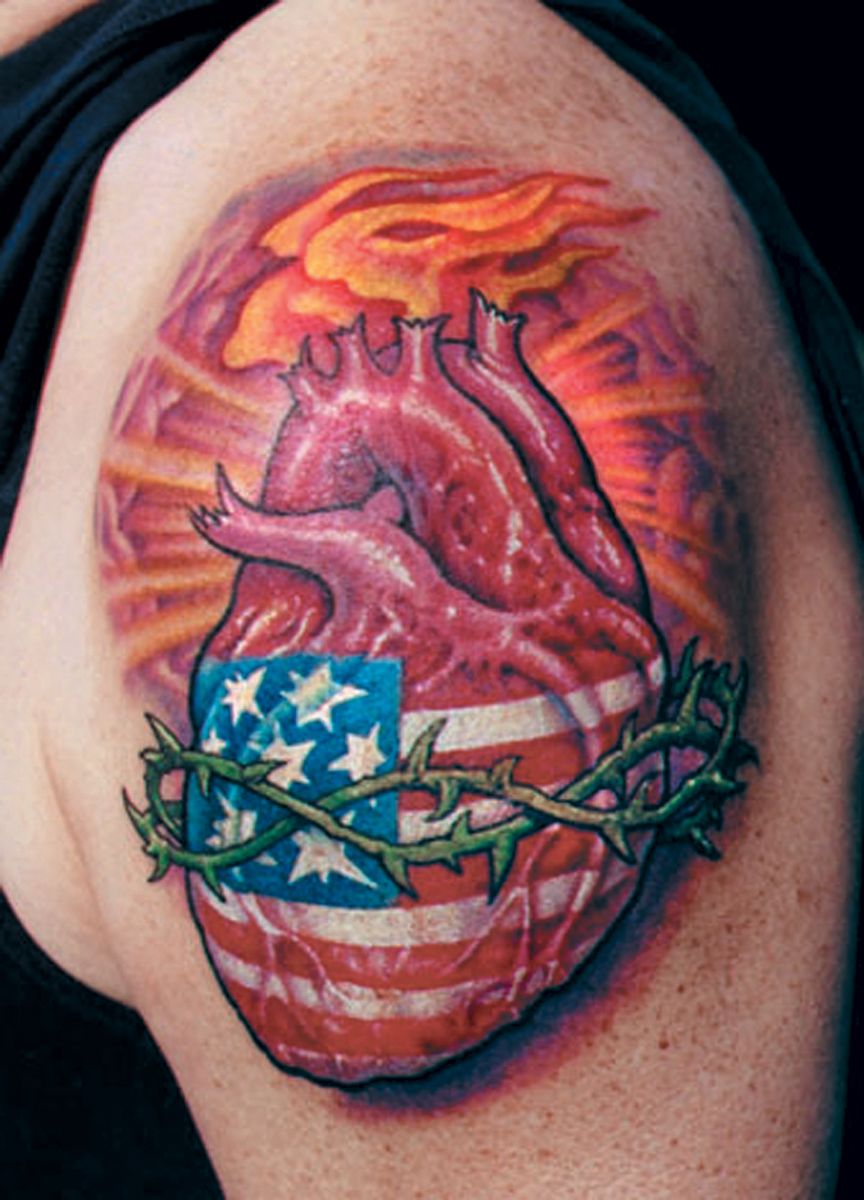
Fig. 18a demonstrates a totally different approach to using the back, showing an illustrative design instead of an abstract one. With illustrative pieces, there must be a balance between the readability of the design and its fit on the body. Unlike abstract design, where every element can be custom fit to the anatomy, illustrative tattoo design needs to fulfill the requirements of the subject matter as well as flowing with the body. In this case, we chose to emphasize the powerful V shape of the wings, which sits perfectly on the latissimus dorsi, and to keep the remainder of the eagle fairly classic, based on a design from the 1970’s. We also included light rays radiating from behind the eagle and spreading out along the lower sides of the back and up the center of the trapezius at the top. Clouds circle around the design in the opposite direction of the rays, breaking up the straight lines of the rays and helping establish the V-shape along the sides of the tattoo. The bright yellow sun sits at the center of the back’s widest part, concentrating visual energy there and giving the rays and eagle an appearance of outward expansion. The symmetrical flow of the sun, rays and wings helps to balance out the asymmetric parts of the eagle and banner.


Fig: 18b shows another example of a smaller design on a larger body part, attempting to maximize the placement of the tattoo in such a way to work well with the muscles. The diagonal S-curving layout sits naturally on the arm and makes it easier to build upon later when the client wants larger work. If we think of every small piece as an opportunity to gain a new custom client, it’s pretty much a given that we’ll end up working around and adding on to our smaller work. It’s always a good idea to consider the larger picture, even with small tattoos. The piece in Fig. 18c is an example of a moderate sized tattoo designed to fit the deltoid muscle. Thorns, veins, stripes, flames and rays all bring movement into the design, and the cloudy background at the top of the shoulder prevents the piece from being bottom heavy or looking like a sticker.
Join the discussion in the forum.